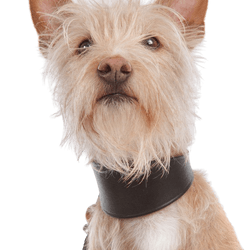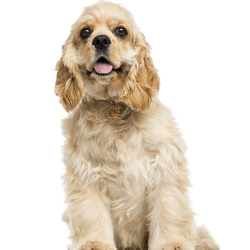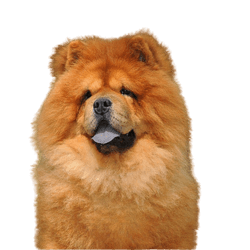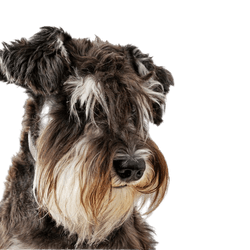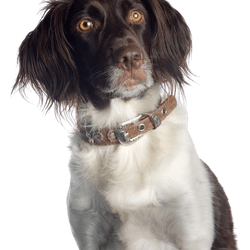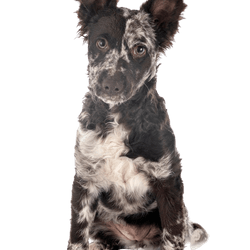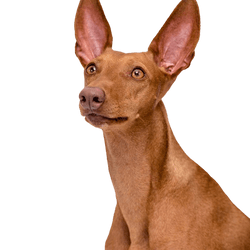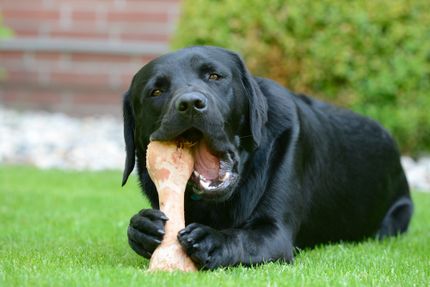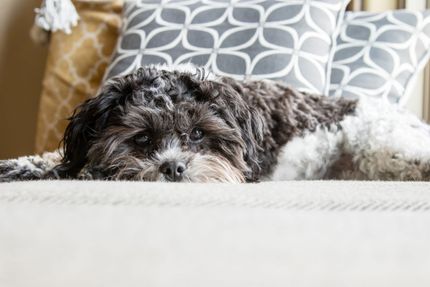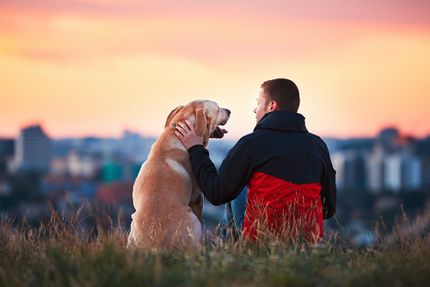
Schipperke Breed description: Character & Co
Schipperke
Facts & Origin
Small but mighty: Despite its size, the Belgian Schipperke does not lack self-confidence. Not for nothing was the smallest sheepdog in the world nicknamed "Little Black Devil". The sporty four-legged friend is considered particularly courageous in its ranks and is bravely devoted to his family.
What is the origin of the Schipperkes?
The appearance as well as the colour of the Schipperke is derived from the Leuvenar, a primitive and also small shepherd dog from the 17th century. The Leuvenar, which is now extinct, is therefore not only the ancestor of the Schipperke, but also of the Belgian Shepherd Dog. At that time, the small sheepdogs were particularly appreciated for their nimble nature and speed, with which they reliably killed rats and mice. However, the history of the Belgian small dog goes back even further - at least that is what cynologists assume. First mentions of the Schipperkes or a very similar dog can be found in medieval chronicles of the 15th century, among others.
However, the Schipperke breed did not make the leap to fashion dog until the Belgian Queen Marie-Henriette. She acquired the unique dog in 1885 during an exhibition in Brussels and subsequently made him known beyond the borders of Belgium. In 1887 the first Schipperke were imported to England and America. As early as 1888, Belgian breed clubs established a uniform standard for the small shepherd dog.
What are the breed characteristics of a Schipperke?
The original four-legged dog belongs to group 1 of the "herding dogs and cattle dogs" within the framework of the largest cynological umbrella organization, the Fédération Cynologique Internationale (FCI). In this group, the Schipperke is assigned to section 1 of the "Sheepdogs" and to No. 83.
Among other things, the dog breed is not registered as a list dog and it is therefore not necessary to carry a dog license.
However, the Schipperke breed is not suitable for allergy sufferers.
| Alternate Name | - |
| Origin | Belgium |
| Life expectancy | 13 - 18 years |
| Care requirements | high-maintenance |
| Activity level | average |
| FCI group | Sheepdogs |
| AKC group | non-sporting group |
| KC group | utility group |
Attitude, character and temperament of the breed
What are the typical characteristics of a Schipperke?
The Schipperke lives up to its reputation as a guardian. Once it has settled into a family, he protects it devotedly. The dog breed therefore makes a wonderful family dog and shows itself to be extremely patient and gentle, especially with children. In addition, the jock always wants to be involved in all activities. If the four-legged dog feels disadvantaged, it also lets this be known immediately.
According to the official standard, the four-legged friend is described as an excellent little watchdog that is bursting with vitality. In addition, the breed is particularly eager to learn and intelligent. Strangers, however, he eyes skeptically, if not even reserved. However, the Schipperke can be kept well with other pets.
The little four-legged friend is particularly curious and likes to go on exploratory tours. Therefore, it absolutely needs active people around him, who fulfill his inner urge to move. Their inherent hunting instinct and self-will drives them constantly forward, which is why you should pay attention to proper training already in puppyhood. If you are still somewhat inexperienced in dog keeping, you should definitely visit a dog school with a Schipperke.
Character
Usage

Health and breeding information
What are the typical diseases of a Schipperke?
First and foremost, the small Belgian Shepherd is a robust and healthy dog breed. However, certain hereditary diseases, such as malignant hyperthermia, can also occur in the Schipperke.
The dog is also susceptible to, among other things:
- Obesity
- Metabolic disorders
- Diabetes mellitus
- Cataract
In Schipperke puppies, hereditary defects such as brachyuria can also occur in some cases. In this case the puppies are born with a shortened tail. Sometimes the defect even produces tailless puppies.
If you want to buy a Schipperke, you should definitely stay away from tailless puppies for animal welfare reasons.
Schipperke breeding - where, how, what
Today you can find reputable Schipperke breeders in many countries. You have a good chance to get a purebred Schipperke, because this breed has not been overbred yet. Health problems, with which especially fashion dogs have to fight, are relatively rare with the small shepherd dog. As a rule, a Schipperke costs around 1,200 euros upwards.
Nevertheless, you should always choose the breeder carefully. Ideally you should meet the breeder at least once, better twice. Be sure to let them show you the kennel and the animals. Make sure that you like the breeder and that he answers your questions correctly. If he shares his knowledge about the animals with you and also tells you something about the parents, it is usually a serious breeder.
Of course you can also get a Schipperke from a shelter. Many animals have been looking for a home for a long time and if you are sure that you want to actively take care of this dog for the next 13 years or more, nothing can go wrong.


Appearance and coat of the Schipperke
The Belgian Schipperke is a small wolf-like sheepdog that is stocky and powerfully built. He will appear relatively square to you at first glance, as its shoulder height is also equal to its body length.
Schipperkes possess a somewhat wedge-shaped head, with the eyebrow arches being only moderately arched. They also have a strong build, a broad chest, and a muscular neck.
The Schipperke possesses high set prick ears that have a triangular, pointed shape. The transition between the face and the upper body is only partially visible. Other characteristics include a broad forehead, a moderately pronounced stop, and a high, curled tail. The eyes of the Belgian Shepherd are almond-shaped and usually dark brown in color.
Characteristic of the agile dog is, among other things, the dense coat, black and of a firm texture, which forms the collar of the neck, the mane, as well as the trousers and apron. The coat is usually uniformly black, although chocolate and beige are also permitted. With age, the coat of the quadruped may also take on a grayish undertone.
How tall does a Schipperke grow?
Males have a height at the withers of 28 to 33 cm, bitches on the other hand only grow up to 25 to 30 cm. Therefore, the Schipperke undoubtedly belongs to the small dog breeds.
How much does a Schipperke weigh?
According to standard, the weight of the small Schipperke should be between 3 and 8 kilograms.
How old does a Schipperke become?
The life expectancy of a well-bred Schipperke is basically between 13 and 18 years.
| Fur length | medium |
| Fur | flat coated |
| Ear shape | Standing Ears |
| Tail | rolled up |
| Anatomy | rugged, strong |
| Size ♀ | 25 - 30 cm |
| Weight ♀ | 3 - 8 kg |
| Size ♂ | 28 - 33 cm |
| Weight ♂ | 3 - 8 kg |
| Suitable For | - |
Colors

Known Diseases
Diabetes
The metabolic disease diabetes often occurs in overweight dogs.
Cataract
Cataracts are still one of the most common causes of blindness, even in dogs.
Metabolic diseases (cystinuria)
Cystinuria is a hereditary metabolic disease. Affected dogs lack a transport protein for certain amino acids (protein building blocks). In the kidney, the task of this transport protein is a return transport of amino acids from the urine into the bloodstream.
Overweight
Often, unfortunately, the dogs very much under excess weight. But the dogs themselves are never to blame!
Other medium dogs
Useful Articles

You can find articles that might interest you in the dogbible blog to match your favorite breed.
Visit our magazineto stay up to date on dog trends.
To find out more, view our Privacy Policy
Find here the breed that suits you and find out what character traits it has. Here you can also learn more about the origin, size and weight of your favorite breeds.
Matching your favorite breed, you'll find articles that might interest you on the dogbible dog blog.
Celebrity dog - which breed belongs to which celebrity
Why your dog should sleep in your bed! Tips and reasons
First vaccinations for the puppy - Legal situation, What vaccinations are good and important


